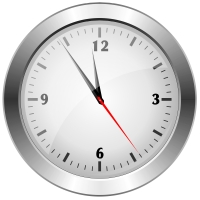Time Management Advice to Kick Start the New Year

Stanford University/The Miles Group recently conducted the 2013 Executive Coaching Survey. The survey revealed that CEOs are focusing on conflict management, listening, delegation, mentoring, and other skills needed for the top job.
One skill oddly missing from the list was time management. With their broad areas of responsibility, CEOs face more time management challenges than most people. Given their vast experience and skills, CEOs undoubtedly learn the art of mastering time earlier in their careers than employees in more specialized roles. A significant question remains—How can we get better at managing time?
Adam Bryant shares this in his book, The Corner Office: Indispensable and Unexpected Lessons from CEOs on How to Lead and Succeed: "David Novak of Yum Brands said that an effective check on how you're spending your time is to ask yourself whether what you're doing is 'action' or 'activity.'"
Simply put, the time spent on an action brings you closer to the eventual goal; the time spent on activities might make you feel good, but it might not necessarily be a contributor to progress. Examples of such activities include checking emails more often than needed, creating reports that only have "nice to know" data, taking extended breaks, etc.
At the most basic level, each job exists for a purpose, and the time spent doing justice to the purpose of the job is really what David Novak means as actions. This illustration takes us closer to the concept of touch time.
In a lean production system, touch time is the time that the product is actually being worked on and value is being added. In manufacturing lingo, it is the time that a practitioner spends with the machine shaping the product. It is the most crucial time in the production.
For a software tester, touch time is the time actually spent in testing the application under test. All other activities that prevent a tester from actually testing an application would constitute non-touch time activities. We can safely conclude that touch time tasks would be more similar to actions rather than activities.
Aligning actions with touch time tasks is crucial, but in some cases doing this alone may not achieve the best investment of time. Consider a case in which a task is a touch time activity but it is offset from the group's goals. For example, a tester spending time testing a particular feature would be a touch time activity, but he may still fail in being effective if he is testing a lower priority feature. Thus, for actions to reap greater rewards, they should always be aligned with the organization's goals.
As Bryant further concludes, “People should make time—daily, weekly or quarterly—to study their time and to assess and analyze how they're using it."
So, are you action-oriented or activity-oriented?

